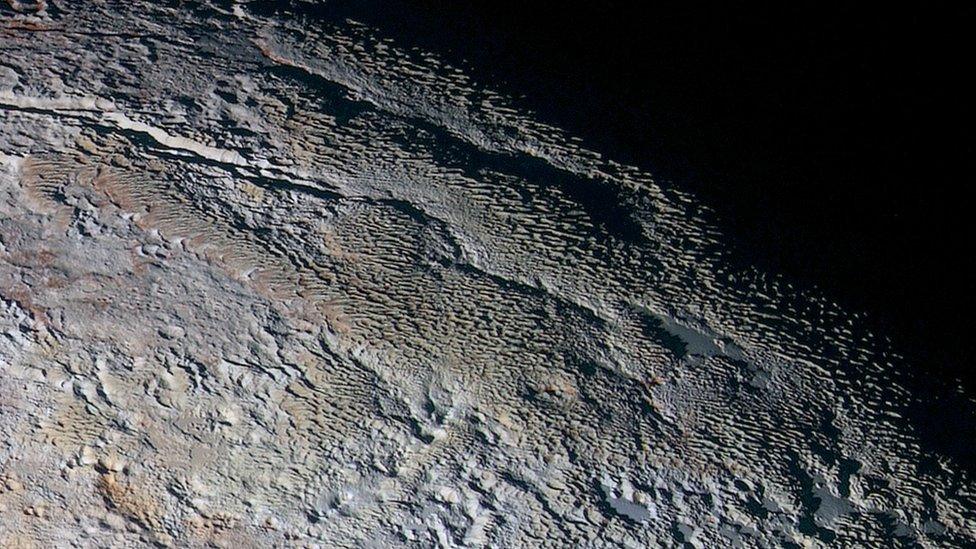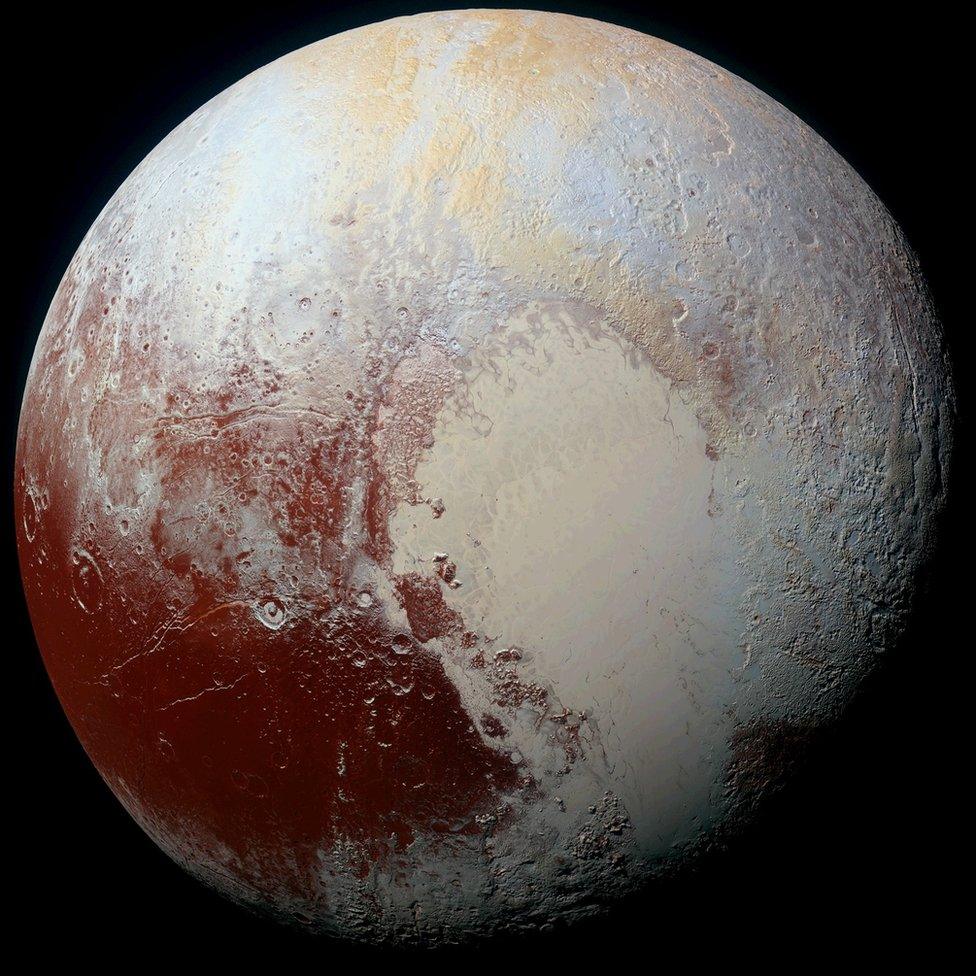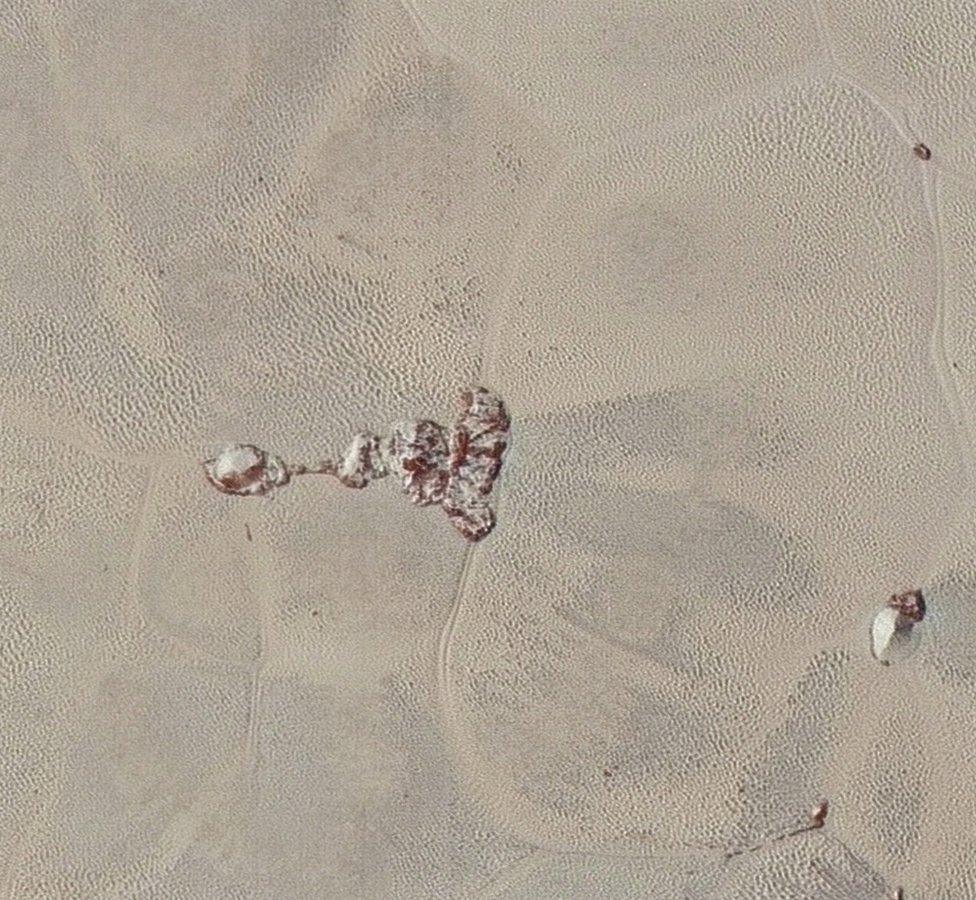New Horizons: Pluto displays rippling terrain
- Published

This strange terrain is on the eastern edge of the new colour image from the Ralph camera
A great swathe of Pluto that features a strange rippling terrain is perhaps the highlight of the latest image release from the New Horizons mission.
The Nasa probe, which flew by the dwarf planet in July, continues to downlink its data, and as it comes in, the scientists get to work on it.
The ripples stretch for many hundreds of km.
"It looks more like tree bark or dragon scales than geology," observed mission team member Bill McKinnon.
"This'll really take time to figure out; maybe it's some combination of internal tectonic forces and ice sublimation driven by Pluto's faint sunlight," the Washington University, St Louis, scientist said in a US space agency release.
The best way to look at "scales" is to browse the new high-resolution enhanced colour view of Pluto that has been made available (PNG file, 70MB), external. The features are on the far eastern edge.

The image resolves details and colours on scales as small as 1.3km
This super image comes from the Ralph/Multispectral Visual Imaging Camera on New Horizons. It combines blue, red and near infrared (NIR) images.
The enhanced view will help decode the various geological and climatological processes that have worked together to produce all the complex surface features seen on Pluto.
Alex Parker, a team member from the Southwest Research Institute, Boulder, worked on the Ralph portrait.
"This image consumed the better part of this week for me," he tweeted, external.
"I removed striping noise and deconvolved the images, massively improving sharpness.
"Since the NIR, red and blue images used to make this colour composite are taken separately, they have to be precisely aligned in software.
"The instrument is a TDI (time delay and integration) camera, and has funny spatial distortions. I removed all of these by hand to create the final colour product."

The Lorri mosaic is probably the highest resolution view yet of the surface of Pluto
Also released this week are probably the highest-resolution images seen so far.
They come from the Lorri camera and show details down to 270m across. Lorri is a black and white camera, but the imagery released by Nasa has been coloured with Ralph information.
The mosaic includes a segment of so-called Sputnik Planum. Incorporating a series of large polygonal features, in previous releases the icy surface has appeared to be ultra-smooth. But in this new higher-resolution view, it is possible to see a more dune-like and pitted texture.
New Horizons continues to move deeper into the outer Solar System even as it downlinks its flyby data.
It has now gone 90 million km beyond the dwarf, which puts it very nearly five billion km from Earth.

Close in, it is possible to see dune-like and pitted features on the "smooth" surface of Sputnik Planum
Jonathan.Amos-INTERNET@bbc.co.uk, external and follow me on Twitter: @BBCAmos, external